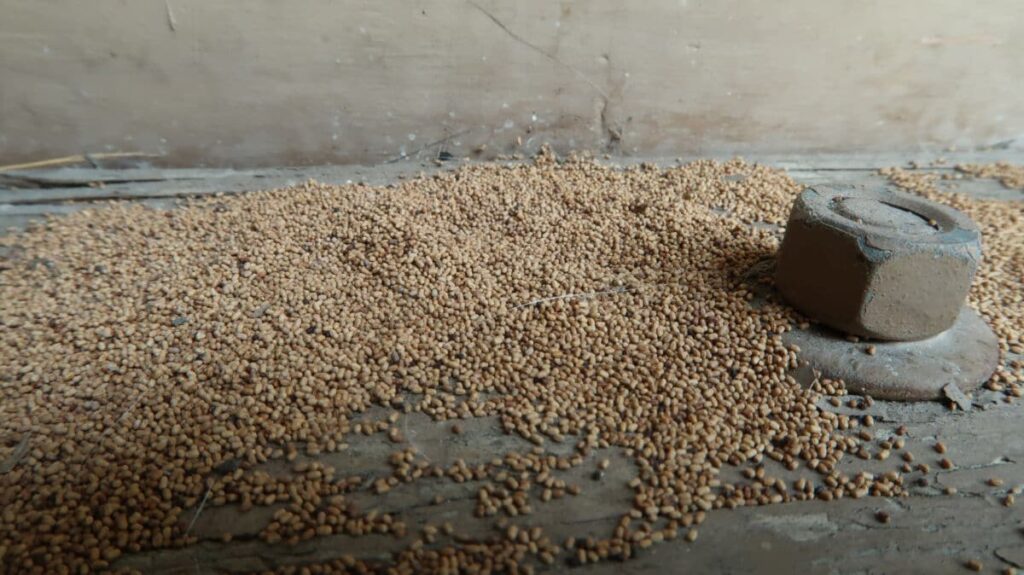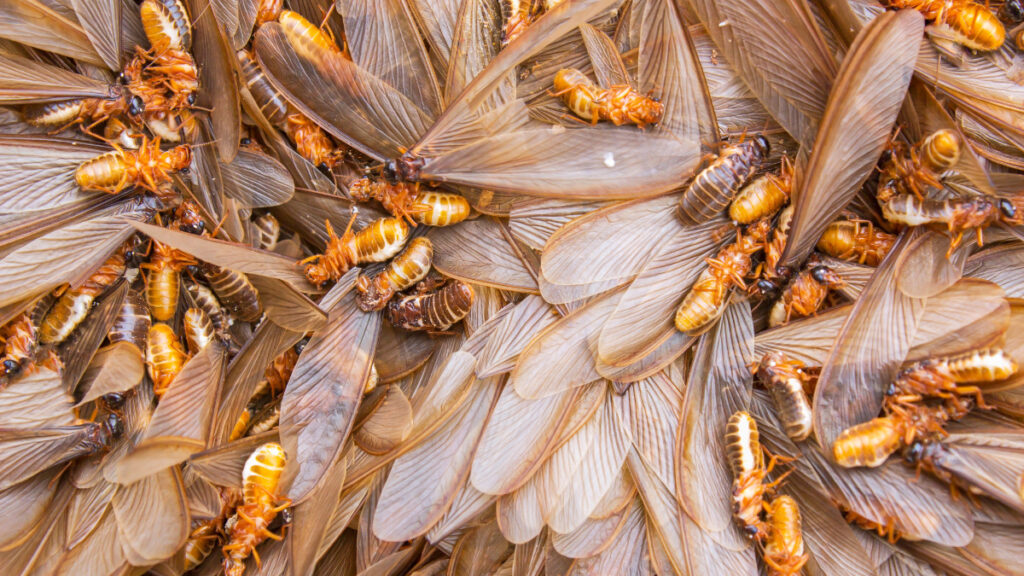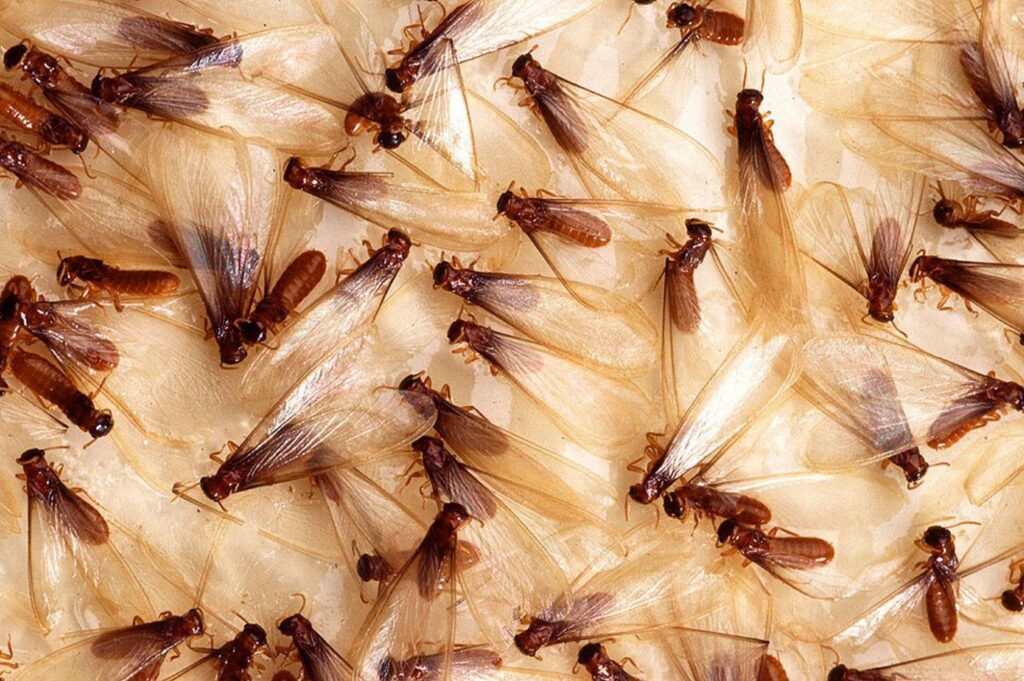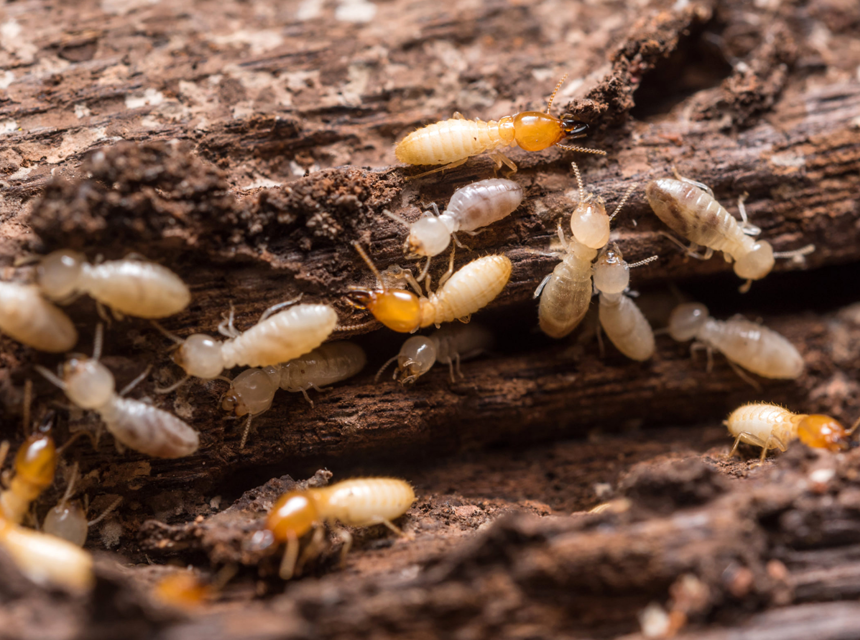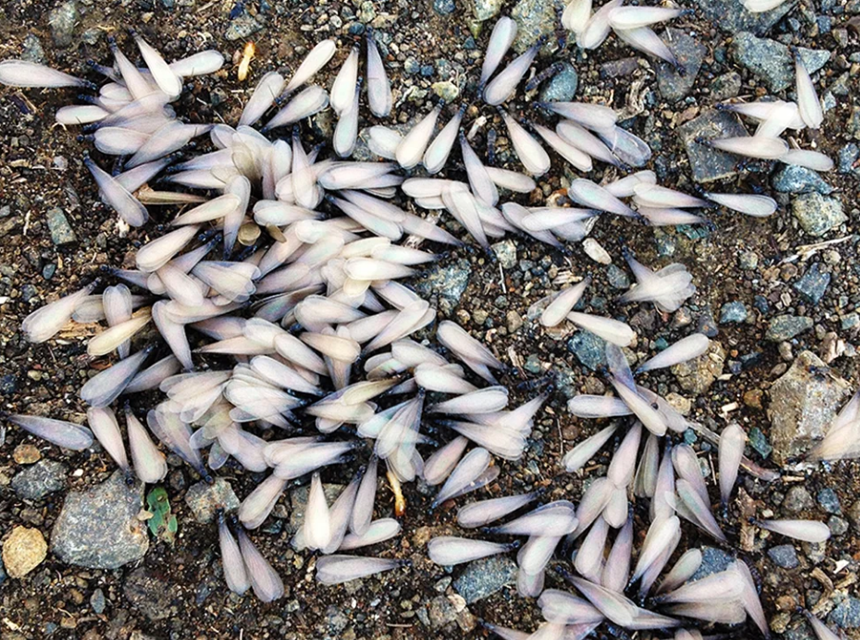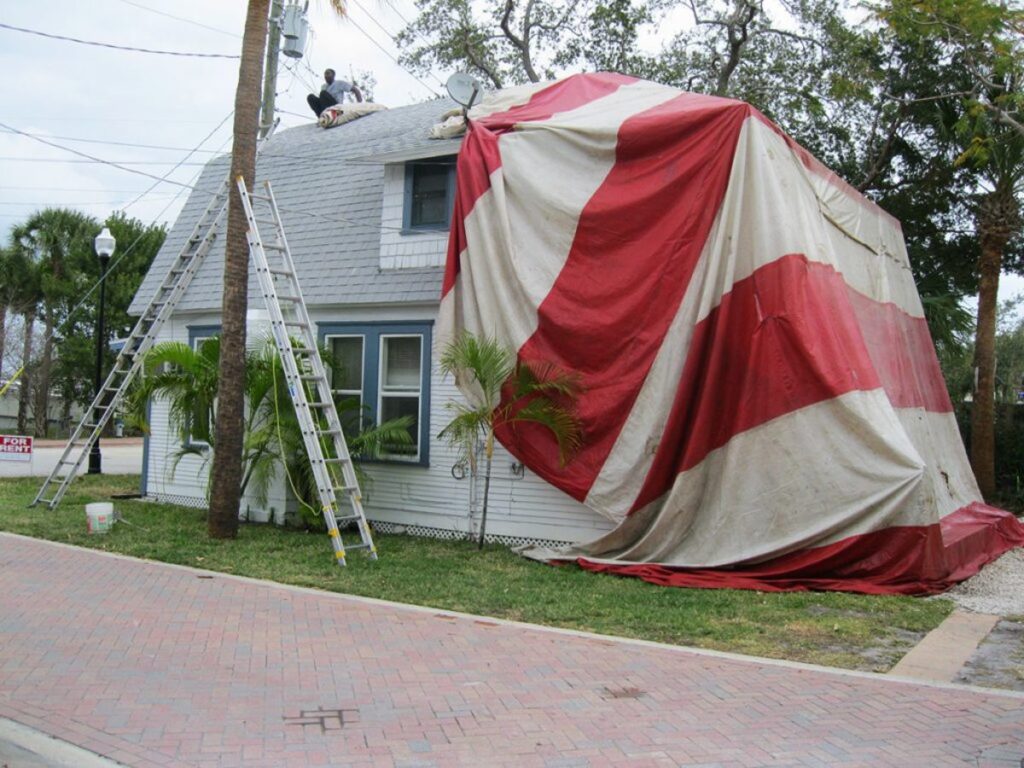

Are you noticing more and more holes in your lawn? Well, it’s not just you – lawn pests are everywhere! Termite holes are a telltale sign that termites are present, and they can extensively damage your lawn if not if you don’t find an adequate remedy early enough.
Many homeowners casually ignore the danger termites pose and the damage they can cause. Despite their small sizes, termites can cause extensive damage to your home in as little as six months if left unchecked.
This article covers everything regarding termites, how to identify termite holes, what to do if you see them, and some preventative measures you can take to keep them at bay.
Termites are brown or almost whitish insects about 1/2 inch long with a triangular head and mandibles.
They’re also social insects that live in colonies of several hundred individuals. Each colony is headed by an adult queen and her brood of workers. Termites feed on wood and plant material, constructing their subterranean nests by chewing the wood into small pieces.
As a result, they can cause immense damage to buildings and homes if left unchecked.
Termites live in colonies of hundreds of individuals in underground tunnels.
Termites usually inhabit soil near the surface but can also be found in moist wood. They feed on wood by eating small pieces that are turned into shavings that they carry back to their colony.
Termites are fascinating creatures and can be a nuisance if they invade your home. However, they are also crucial in the environment because they help break down cellulose in wood into humus.
There more than 2,500 species, which are grouped into three main types Trusted Source Subterranean Termites | MU Extension There are approximately 2,500 species of termites worldwide. Most are found in tropical areas, while relatively few live in colder climates. Only about 45 species are found in the United States, and most of these are located in southern states. extension.missouri.edu based on their natural habitat: subterranean, dry wood, and tropical.
Subterranean termites build their nests below the ground surface; dry wood termites live in dry areas such as forests and shrubs, and tropical termites live in warm regions such as South America and Africa.
Subterranean termites are the most prevalent type in the U.S. They build their nests in soil or sand and eat wood.
Subterranean termites come in two varieties: Formosan and Oriental.
Formosan termites: They are the most common type of termite in the Southeast United States. They are closely related to Oriental termites but have a modified diet that includes symbiotic fungi that they extract from tree roots.
Oriental termites: Although native to South Asia, they’re the most common type of termite in the Northwest and Northeast United States. They are closely related to Formosan termites but have a modified diet that includes symbiotic fungi that they extract from tree roots.
Drywood termites: Drywood termites live in areas with little or no moisture available, such as forests, parks, and gardens. Wood fibers and mud are the primary construction material for their nests.
Tropical termites: Tropical termites live in warm areas worldwide, including South America and Africa. Like their dry wood counterparts, tropical termites fashion their nests out of wood fibers and mud.
Termites can create tunnels in a variety of materials. However, some termites specialize in boring holes in particular types of materials. For example, the eastern subterranean termite is known for creating holes in softwood lumber.
The eastern subterranean termite Trusted Source Native Subterranean Termites Most pest species of subterranean termites in North America belong to the endemic genus Reticulitermes. Reticulitermes species are found in every state in the continental United States except Alaska, but are most common in the warm and humid southeastern region. entnemdept.ufl.edu is not the only termite that specializes in creating holes in particular materials. Other termites, such as the northern subterranean termite, the southern subterranean termite, and the western subterranean termite Trusted Source Reticulitermes hesperus (western subterranean termite) Datasheet Type(s): Pest, Exclude from ISC www.cabi.org , create holes in hardwoods. Additionally, some termites create holes in non-wooden materials, such as masonry and plastic.
Despite their specialized tunneling behavior, all termites ultimately create tunnels rather than holes that lead to underground chambers where they live and eat. However, based on their tunneling behavior, it is likely that all termites can create holes in most materials if they are motivated to do so, either to build a colony or to feed.
Some termites are known to weaken wood by eating away at the tree’s core. This process can cause the tree to become unstable and eventually collapse. While this behavior is typical among eastern subterranean termites, it is not exclusive to this species.
For other termites, even though they may not bore through or eat wood, they may also weaken trees and other woody vegetation by creating tunnels near the surface of the tree.
Regardless of their tunneling behavior, all termites ultimately affect wood somehow. While some termites may cause more damage than others, all termites can weaken wood.
No, but they have a feature that works as a colon.
Termites are invertebrates Trusted Source Termites | National Wildlife Federation Learn facts about termites’ habitat, diet, life history, and more. www.nwf.org , meaning they have a segmented body and no backbone. As a result, the termite’s body is divided into three parts: the head, the thorax, and the abdomen.
The head contains the insect’s mouth, eyes, and several antennae for sensing their surroundings. Unlike other insects, their antennae have a somewhat beaded appearance and do not bend their whole length.
The thorax has the insect’s wings and other organs for flying and manipulating objects with their mandibles (jaws). The abdomen contains the termite’s reproductive organs, other tissues, and microorganisms essential for digestion.
Termites typically have one pair of wings to stay airborne while exploring their environment, but wings are reserved for those tasked with reproduction. Additionally, termites can use their mandibles to break open wood and extract food.
Termite holes can look different depending on the type of termite and the environment in which they live. However, all termite holes share some standard features. First, they are usually small and round. Second, they often have a zigzag or wavy line running through them. Finally, they often have a narrow opening at the top and a wider opening at the bottom.
Termite holes can also vary in shape and size depending on the termite species. For example, subterranean termites often create small, round holes, while Dry wood termites make larger, rectangular openings.
Termite holes can also be decorated with mud, soil, and wood chips. This decoration is often used to attract other termites to the colony, which helps the termites reproduce and build their nest.
Termite holes can be challenging to see from the ground, but they are usually easy to spot from a high vantage point. For example, a house or business might have a termite inspection team that regularly inspects for signs of termite damage.
However, termites can cause more extensive damage to structures when they go unnoticed. Here’s a quick rundown if you notice any of the following signs Trusted Source Chapter 4: Disease Vectors and Pests | Healthy Housing Reference Manual | NCEH NCEH provides leadership to promote health and quality of life by preventing or controlling those diseases, birth defects, or disabilities resulting from interaction between people and the environment. Site has information/education resources on a broad range of topics, including asthma, birth defects, radiation, sanitation, lead in blood, and more. www.cdc.gov in your home or business, termites are likely to be present:
Termite holes are not the only sign of termite infestation. Check out the video below to find out other ways to identify termites.
Termites are one type of insect that build mounds in the ground. Other insects can also bore through wood, and other materials include ants, old house borers, and carpenter bees.
Ants are the most well-known insect that makes holes in the ground. They do this primarily to feed and build their shelter. Carpenter ants, however, are known for making holes in the wood. The difference here lies in the form of the holes. Those made by carpenter ants are smoother, whereas those made by termites are more on the rough side. Check out our complete guide on the best carpenter ant killers to get rid of them.
However, there’s a critical difference between termites and other insects that eat or bore through wood. This distinguishing feature is how termites process the wood material they eat.
Unlike other wood-boring insects, which rely on accumulated sugar found in wood, termites convert the cellulose content into sugars that can be easily absorbed and utilized by their bodies. Another surprising thing is that they have protozoa and bacteria — microorganisms that help break down cellulose, a capability found only in select organisms.
Here are effective ways to quickly identify and deal with a termite hole or infestation:
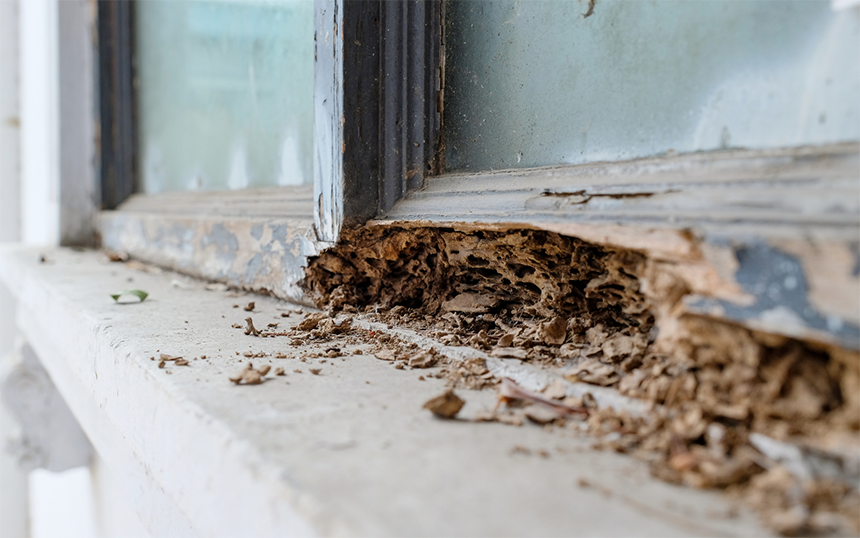
However, these three are reactionary measures. Here are simple and practical solutions to prevent a termite infestation on your property:
Termite holes are quite a common sight in most homes. While they may not seem like a big deal at first, termite holes can lead to major structural problems in your home. If you have sufficient reason to believe there are termite holes on your property, hire a professional to conduct a proper survey/investigation and apply necessary remedies.
Remember, termites are tough little guys. All they need is the right motivation – read enabling conditions – and they’ll wreak complete havoc. They’re also an important cog in the ecosystem, and their invasion should be managed carefully to avoid disrupting ecosystem functions.
The best strategy to defeat these persistent pests is adopting a preventative approach and involving professionals as soon as you notice termite holes on your property rather than working it out yourself.
